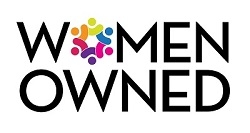What Should You Be Using In Your Skin Care Routine?
Take my quiz and get personalized recommendations from a
licensed esthetician!
Forehead Acne: Where Your Breakouts Are Located and What That Reveals About Your Health
Let’s face it: acne, and forehead acne in particular, can be a total nuisance. Acne is the most common skin condition in the U.S. and, believe it or not, one of the most Googled topics too! According to the American Academy of Dermatology (AAD), it affects up to 50 million Americans annually. If you're nodding your head in agreement, I want you to know that you're not alone in this frustrating journey.
I completely understand how disheartening it can be to deal with persistent breakouts. It’s not just about the pimples; acne can lead to lasting scars, diminished self-esteem, anxiety, and even depression. Plus, seeing countless images of others flaunting flawless skin while you grapple with breakouts can be disheartening.
But here’s a comforting thought: the root causes of those annoying pimples might run deeper than what meets the eye. Today, we're going to explore a fascinating method of identifying the source of your breakouts: face mapping.
Understanding Forehead Acne: The Basics

Before we dive into the specifics of face mapping, let's take a moment to consider what forehead acne really is. Forehead acne, often characterized by small bumps, cysts, or even larger inflamed spots, can occur when the tiny glands beneath your skin become clogged with excess oil, dead skin cells, and bacteria. This common skin complaint can appear in clusters, leaving you feeling self-conscious and frustrated.
The Factors Behind Forehead Acne

Multiple factors can contribute to forehead acne, including:
-
Hormonal Fluctuations: Changes in hormone levels, particularly during puberty, menstruation, pregnancy, or due to hormonal disorders, can lead to increased oil production and subsequent breakouts.
-
Stress: When life gets overwhelming, your body releases cortisol, which can trigger an uptick in oil production, leading to acne.
-
Diet: What you eat can influence your skin's health. High-glycemic foods, excessive dairy, and processed sugars can wreak havoc on your complexion.
-
Poor Skincare Habits: Neglecting basic skincare practices, such as not washing your face before bed or using comedogenic products (those that clog pores), can exacerbate forehead acne.
Now that we have a grasp on what forehead acne is and its common triggers, let’s dive into face mapping and how it can help us understand our skin better.
What is Face Mapping?

If you’ve ever had a facial, you may have noticed your esthetician taking notes or drawing on a diagram of your face. Welcome to the art of face mapping! Also known as mien shiang, which translates to “face reading,” this ancient practice is rooted in traditional Chinese medicine.
So, what exactly is face mapping? It’s a fascinating method that connects specific areas of the face to different internal organs and health issues. Essentially, where you experience breakouts can provide clues about what’s going on inside your body.
Historically, face mapping was used by practitioners to diagnose internal health problems long before the advent of modern medical imaging techniques. The philosophy behind this practice suggests that our organs can influence one another, and, as the largest organ, our skin reflects our overall health.
Is Face Mapping Acne Reliable?

While face mapping is a time-honored practice, it's essential to approach it with an open mind. Some Western medical practitioners remain skeptical about its claims, citing a lack of empirical evidence. Dermatologist Eric Joel Meinhardt notes that while he is "open-minded," he hasn't seen conclusive evidence supporting face mapping's effectiveness.
However, my years of working directly with clients tell me that while skin issues can often be attributed to topical concerns—like clogged pores and excess oil—there's often an internal component at play as well. Factors such as hormone levels, dietary habits, and even stress can definitely show up on your skin.
A Roadmap to Understanding Your Breakouts
So, what do different zones on your face indicate when it comes to forehead acne? Let's break it down:
So, what do different zones on your face indicate when it comes to forehead acne? Let's break it down:

1. Forehead: Digestive System
When you notice breakouts across your forehead, they often appear as hard clusters or cystic formations. These pesky pimples might signal that your body is struggling to digest certain foods. Common culprits include:
-
Stress: A significant contributor to digestive issues, which can result in acne.
-
Poor Diet: Consuming excessive processed or fatty foods can lead to breakouts.
-
Dehydration: Not drinking enough water can negatively impact your skin's health.
If your forehead acne is particularly stubborn, consider ditching sugary sodas and carbonated drinks. Instead, try drinking green tea, which is packed with antioxidants and can benefit your skin. Also, pay attention to the hair care products you use; ingredients from shampoos and conditioners can clog your pores if they come into contact with your skin.
2. Above the Eyebrows: Immune System
Breakouts in this area are often a sign that your immune system may be compromised. If you find yourself getting sick frequently or feel under the weather, you might see pimples popping up here. To support your immune system, stay hydrated and drink plenty of warm teas, especially those infused with lemon. And if you use eyebrow grooming products, consider giving your skin a break from these products to see if your skin improves.
3. Between the Eyebrows: Liver
The area between your eyebrows is often associated with the liver. If you notice acne in this region, it may be time to examine your diet. Potential triggers include:
-
Sugary and Greasy Foods: High-fat and sugary foods can impede blood flow and lead to bloating.
-
Alcohol: Drinking can dehydrate the skin and increase inflammation.
-
Food Allergies or Intolerances: Keep track of what you consume and how it affects your skin.
Combat acne between your eyebrows by focusing on a balanced diet. Choose lighter foods, such as cucumbers and watermelon, and try to avoid rich, fatty dishes. And remember, the midnight sweet treats can be tempting, but your skin will thank you if you skip them!
4. Cheeks: Respiratory System
Cheek acne can often be linked to environmental factors, such as smoking or air pollution. Smoke and pollutants can penetrate the skin and clog pores, leading to breakouts. While you can’t always control the air quality around you, you can certainly wash your face at the end of the day to remove any buildup.
If you’re a smoker, it might be time to consider quitting, as smoking is a significant contributor to skin damage. Also, keep your phone and pillowcases clean; you don’t want dirt and bacteria transferring onto your face!
5. Chin and Jaw: Hormones and Stomach
Acne in these areas can be particularly stubborn and is often associated with hormonal changes. Women frequently experience breakouts on the chin and jawline due to:
-
Menstrual Cycles: Hormonal fluctuations can lead to increased oil production.
-
Pregnancy: Hormonal shifts during and after pregnancy can trigger cystic acne.
-
Polycystic Ovary Syndrome (PCOS): This condition can cause chronic acne flare-ups.
- And More.
If you’re struggling with consistent breakouts in these areas, it might be worthwhile to get your hormone levels checked. Dermatologists may recommend various treatments, including birth control pills or topical antibiotics.
Lifestyle Changes to Help Heal Forehead Acne
So, you’ve learned about face mapping, and now you're ready to tackle your forehead acne! If you’re adhering to a skincare routine but aren’t seeing the results you desire, don’t despair—small lifestyle changes can lead to significant improvements in your skin.
Dietary Adjustments

-
Monitor Dairy and Sugar Intake: Dairy products can increase the hormones in your body, leading to breakouts. Likewise, refined sugars can spike insulin levels, increasing inflammation and exacerbating acne.
-
Limit Junk Food and Fast Food: Processed fats and high sodium levels can clog pores and cause swelling. Opt for whole foods whenever possible.
-
Try Probiotics: Consult with your doctor about incorporating probiotics into your diet. Research suggests that gut health may directly influence skin health.
-
Stay Hydrated: Water is your skin’s best friend. Aim to drink plenty of it daily to maintain hydration.
- Eat Omega-3s and Fresh Fruits & Veggies: Foods rich in omega-3 fatty acids, as well as antioxidant-packed fruits and vegetables, can support skin cell health and hydration.
Healthy Skin Habits

-
Stick to a Routine: Consistency is key to healthy skin.
-
Avoid Touching Your Face: This habit can spread bacteria and lead to more breakouts.
-
Use Speakerphone: Your phone is a breeding ground for bacteria. Use speakerphone to avoid pressing it against your face.
- Remove Makeup Before Bed: Don’t skip this step! Let your skin breathe and rejuvenate overnight.
Exercise and Self-Care

-
Get Moving: Aim for at least 30 minutes of exercise daily. Increased blood flow delivers oxygen to your skin cells, flushing out toxins.
-
Practice Self-Care: Manage stress through meditation, relaxation techniques, or whatever helps you unwind.
- Prioritize Sleep: Quality sleep is crucial for skin repair and maintaining balanced hormone levels. Aim for 7-9 hours of rest each night.
If you’ve made lifestyle changes and tried various skincare products but still find your breakouts persistent, don’t hesitate to consult your physician. Together, you can formulate a plan that works for you.
Frequently Asked Questions About Acne:

-
What causes cystic acne? Cystic acne often occurs when a pore becomes clogged with dead skin cells and bacteria. Hormonal fluctuations, particularly androgens, play a significant role, as do genetics.
-
How do I get rid of acne fast? While there's no magic potion for quick acne removal, start with a gentle skincare routine that includes a cleanser with salicylic acid or benzoyl peroxide. Avoid home remedies that may irritate your skin further.
-
How do I get rid of acne scars? Treating acne scars depends on the type. Topical products containing antioxidants, vitamin C, retinol, and alpha hydroxy acids can be effective. For more persistent scars, consult a skincare professional about advanced treatments like microdermabrasion or chemical peels.
-
Can apple cider vinegar help with acne? Yes! Apple cider vinegar has antiseptic properties that can help keep your skin pores free from bacteria and excess oil. It can also help restore your skin's pH balance.
-
What is the best acne face wash? The best face wash for acne varies by skin type. Look for gentle cleansers that treat acne without stripping your skin of moisture. Key ingredients to consider include salicylic acid and benzoyl peroxide.
-
How do I get rid of back acne? For back acne, look for body washes containing acne-fighting ingredients and exfoliating AHAs. Remember to shower immediately after exercising and consider using a spot treatment for hard-to-reach areas.
Final Thoughts

Acne, whether on your forehead or elsewhere, can be incredibly frustrating. But remember, you are beautiful, and your skin doesn’t define you! If you feel like your acne negatively impacts your self-esteem, you don’t have to suffer through it. With the knowledge of face mapping and understanding the underlying causes, you can start to pinpoint what might be triggering your breakouts and take actionable steps to treat them.
Don't hesitate to visit your dermatologist or esthetician for guidance tailored to your unique skin needs.

Beauties, have you tried face mapping? Did changing your habits yield results, or did you discover something new? Share your experiences in the comments!
Top Brands
New Brands
How to Guides

Recent Posts

Are You Taking the Right Steps to Care for Your Skin?
Take the Quiz
Skincare Secrets!
10-step guide for healthy, beautiful skin after kids.
100% privacy. I will never spam you!













